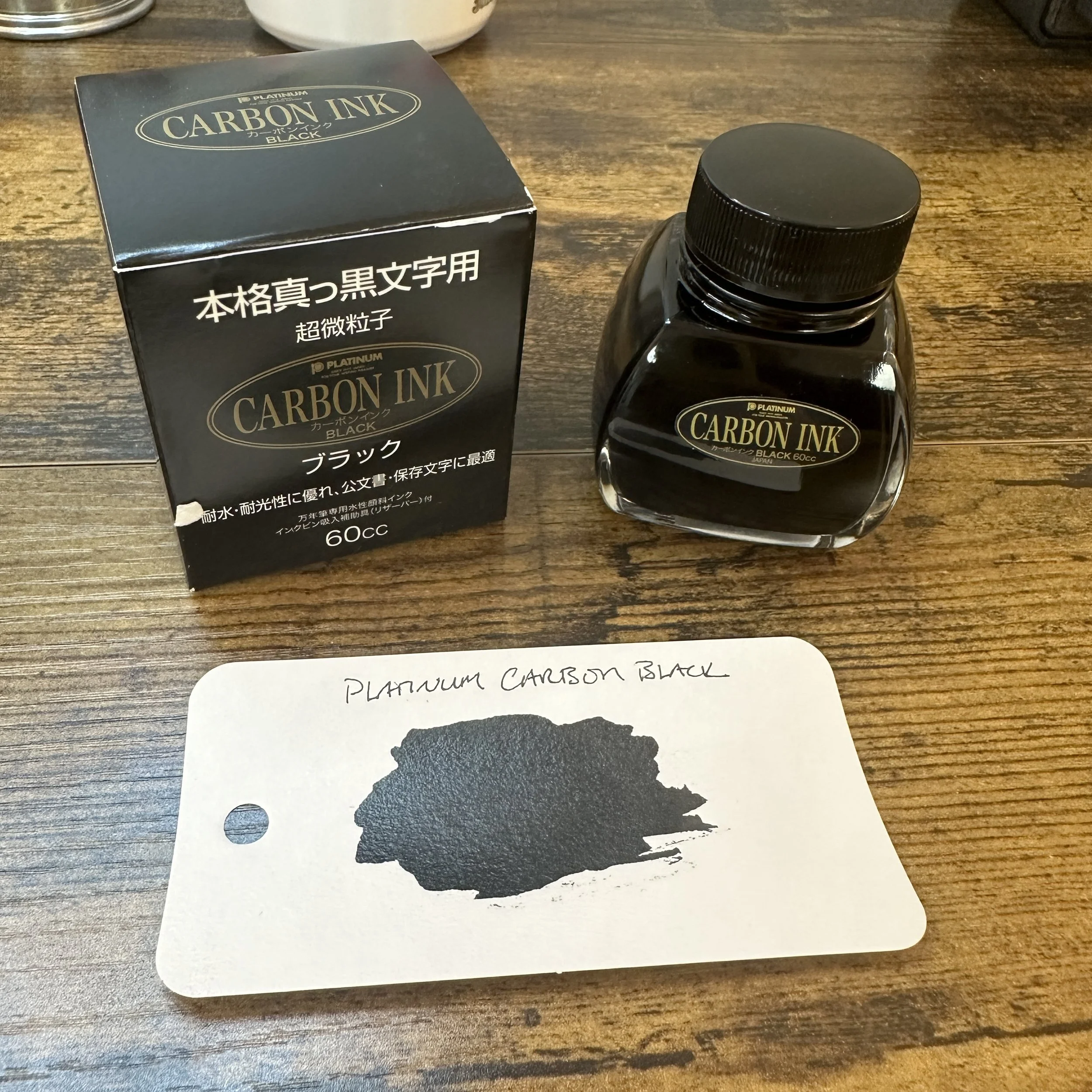I spent this past weekend at the Chicago Planner Conference, and during the course on ink and paper that I helped teach, a key concern among new fountain pen users was how to know whether an ink is “safe” to use in a fountain pen. I previously wrote an “ask T.G.S.” piece about best practices for using shimmer inks, but what about super sheeners, iron gall inks, permanent inks, and others that aren’t considered your standard “water-based” fountain pen inks? Such inks are often labeled “high maintenance” because they do require a bit of extra attention, though the concern is generally overblown. I thought it might be helpful to recap my thoughts here.
Tip 1: As a General Matter, KNow that If An Ink Is Sold by a Fountain Pen Specialty Retailer or manufacturer, and Labeled “For Fountain Pens,” It most likely Will Not Hurt Your Pens.
While there are a handful of fountain pen inks that have been known to damage certain materials due to their chemical content, you mostly only have to worry about inks staining or damaging white or light-colored acrylics, or absorbent materials like certain vintage celluloids. For these specific materials, avoid permanent inks, and colors such as purples and reds, which I’ve found particularly prone to staining.
Otherwise, modern fountain pen inks will not permanently clog or damage most pens in any way that a normal cleaning (i.e., flushing with water or running through an ultrasonic cleaner) cannot fix. Even inks that contain particles suspended in solution - such as pigmented inks and shimmer inks - will flush out of most pens with plain water. That said, as Lisa, Ana, and I emphasized during the course, under no circumstances should you use India ink or dip pen/calligraphy ink in a fountain pen. Certain of these inks contain shellac and other glue/paint-like substances that, once they dry, can permanently damage a fountain pen and render it unusable.
At the planner conference, there was a surprising level of interest in Platinum’s ultra black pigmented inks such as Chou Kouro (shown here) and the not-quite-as-black-hole-black Carbon Black.
Tip 2: If You Have Any Doubt or Concern, Test the ink with an Inexpensive Pen FIRST, and Clean, Clean, Clean!
This week, I spent several days testing Platinum’s recently released Chou Kuro Black ink, which is supposed to be the “blackest-of-the-black” inks, and so saturated with special pigment that Platinum recommends that your pen be flushed only with purified or distilled water. (I would consider this to be the quintessential “high maintenance” ink, at least per Platinum’s recommendations.) To test the ink, I chose an inexpensive piston filler (a Majohn), and wrote with the pen for a week. While I’m still experimenting with this ink and plan to test it in more pens before publishing a conclusive review, I’ve so far found it no more difficult to clean than your ordinary pigmented ink like Platinum Carbon Black or Sailor Kiwa Guro. I plan to start using this ink regularly - it’s incredibly dark and one of the best “cheap paper inks” I’ve ever used - but to be safe I’ll probably limit it to cartridge-converter pens, if for no other reason than to save time cleaning. Importantly, I will plan to clean any pen containing this ink at least once a month, to avoid any buildup of pigment in the feed and to ensure good performance.
Unlike Chou-Kouro, which dries to a flat matte shade of black that reflects no light, Platinum’s Carbon Black has a slight sheen to it. Shown here on Col-o-ring ink testing paper.
Tip 3: Don’t Overly Concern Yourself With Harming Your Pens and spoil Your Enjoyment of the Hobby.
I’ve been collecting fountain pens seriously for well over 10 years, and using them for far longer. I can count on one hand the number of pens I’ve permanently stained with fountain pen inks, and all of them have been white or clear acrylics. Guess what? All of these pens continued to work just fine as writing instruments. Sure, if you have a particularly delicate celluloid or light-colored pen, and you don’t want to alter the appearance of it with a highly saturated super-sheener, choose a different ink for that specific pen. Probably Waterman Blue. But otherwise, I can guarantee you’re going to have a lot more fun with your inks and paper if you put these sort of concerns to the back of your mind, take reasonable steps to clean your pens every month or so, and just use what you like and what makes you happy.
Iron gall inks are another category of so-called “high maintenance” inks that, in my opinion, requires no more care than most other inks, especially in modern formulations. Just be sure to clean every month or so and you’ll be fine.
For more fountain pen tips, tricks, and general Q&A, check out our resource page here. As always, feel free to write in or leave a comment if you have another specific pen-related question! We’re always happy to answer.
The Gentleman Stationer is supported entirely by purchases from the T.G.S. Curated Shop and pledges via the T.G.S. Patreon Program. We also have a brick-and-mortar store, which you can visit! See here for hours.

